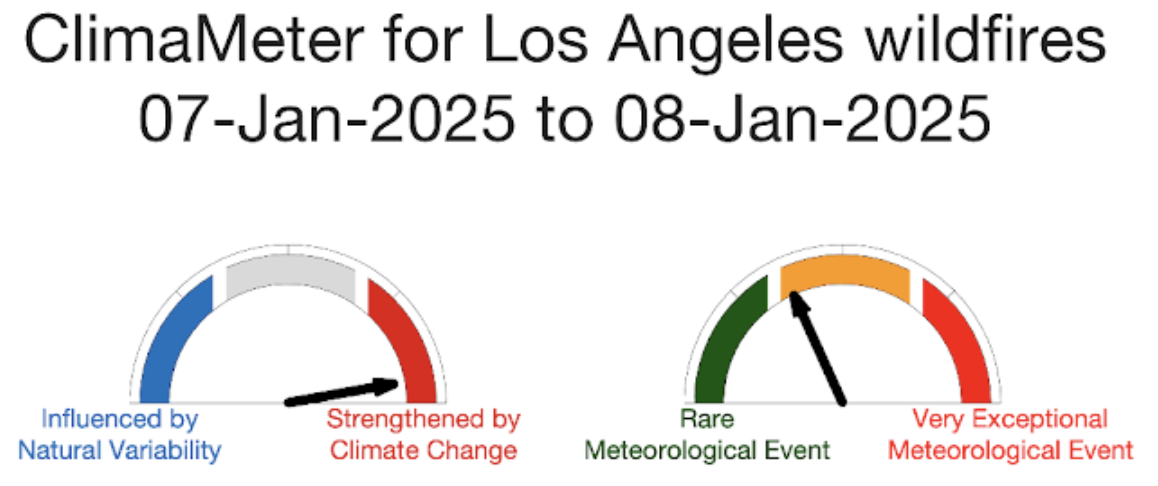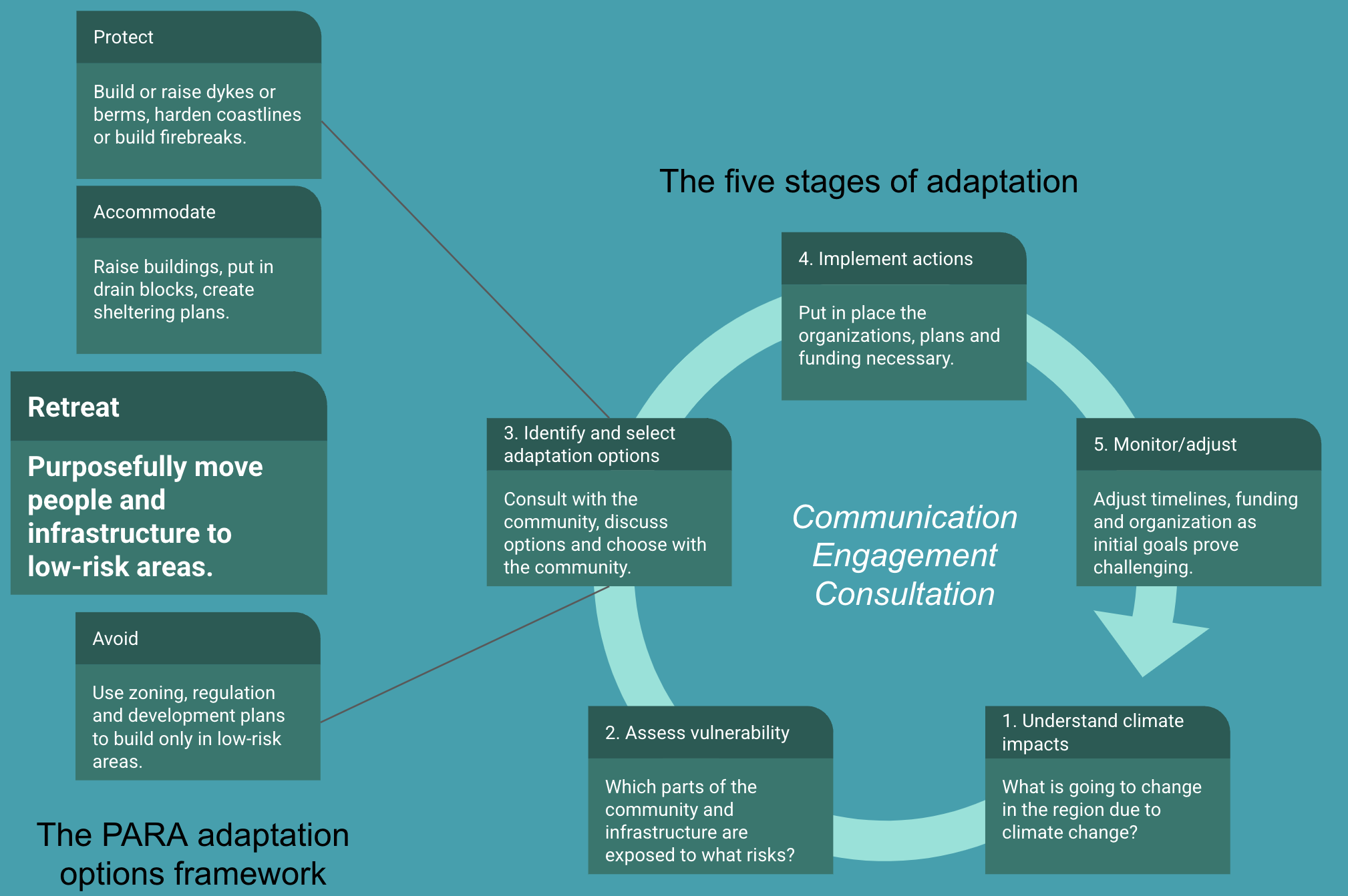
Sign up for daily news updates from CleanTechnica on email. Or follow us on Google News!
The United States, and indeed much of the rest of the world, has been transfixed by the devastation in Los Angeles over the past week. As of January 12, 2025, multiple wildfires are still burning across the Los Angeles area, consuming around 40,000 acres or 6.25 square miles. At least 16 fatalities have been confirmed, and more than 12,300 structures have been destroyed. Around 300,000 residents have evacuated or are under evacuation warnings, while containment efforts are ongoing amidst challenging weather conditions.
The damage is estimated to be $150 billion. Climate change-attributed extreme weather events in the US caused $183 billion in damages in 2024 per the National Centers for Environmental Information, so 2025 is already at 82% of the 2024 total, which itself was a record year for damages, just as 2023 was a record year before it.
But wait, some will say. Wasn’t it the underbrush or the smelt or the DEI? No. Climate change didn’t throw the punch, but it trained the boxer.

“January 2025 California wildfires have been fueled by meteorological conditions strengthened by human-driven climate change”
Meteorological conditions for Los Angeles are up to 5°C warmer, up to 15% drier, and up to 20% windier in the present compared to the past. The strengthened winds, higher temperature, and drier conditions triggering January 2025 California wildfires are due to human-driven climate change, not natural climate variation.
ClimaMeter is the result of years of scientific collaboration and rigorous development and peer review by the ESTIMR team at the Laboratoire des Sciences du Climat et de l’Environnement (LSCE). The core methodology, designed and refined by Davide Faranda, Pascal Yiou, Mathieu Vrac, Robert Vautard, Soulivanh Thao, and Flavio Pons, has been further enhanced by contributions from colleagues and international experts, including Gabriele Messori (Uppsala University), Erika Coppola (ICTP), and Tommaso Alberti (INGV). Communication efforts, led by Terran Kirksey and Rose Andreatta (Climate Nexus) and supported by academic communication teams at LSCE, IPSL, and partner institutions, aim to present ClimaMeter’s findings to policymakers and the public.
The United States’ lack of sanity on avoiding places that were high-risk to build, poor building codes, lack of aggressive underbrush clearing in areas inside the city, and challenges with water supply all led to higher damages, but multiple big wildfires in January in Los Angeles is deeply unusual, something the media has been fairly silent on. Their fire season is at the end of summer, not the middle of winter. The fires are like a Gulf of Mexico hurricane in February.
And therein lie the lessons for urban planners.

A few years ago I co-authored Canada’s municipal guide for planned retreat from urban areas at significant risk of climate change impacts. I was working with planned retreat expert Brent Doberstein, PhD through the consulting group Gevity (acquired by Accenture subsequently) with Patrick Saunders-Hastings, Director of Life Sciences.
Doberstein introduced us to the PARA framework — protect, accommodate, retreat and avoid — the emergent standard for categorization of approaches to addressing increasing risks due to the extreme weather events and higher seas that accompany climate change.
As an analogy, think of flying bullets. Protection would be putting on body armor or being inside an armored vehicle. Accommodation would be having a nearby emergency room and emergency medical technicians who can patch you up when hit. Retreat would be running away from the people with guns. And avoidance would be not being there in the first place. While we ask our military forces and police officers to enter into harm’s way and equip them with body armor, mostly sensible countries avoid the problem with reasonable gun laws equivalent to those required to operate a motor vehicle as well as significant limitations on the types of firearms that individuals can purchase.
For wildfires, protection includes mandated firebreaks around buildings, non-flammable insulation, non-flammable claddings, and building exterior sprinkler systems, none of which were required in Los Angeles. Accommodation includes firefighters, adequate water supplies (a key failure in Los Angeles), insurance, and evacuation centers. Retreat means doing a fire risk assessment and planning the removal of homes, buildings, and infrastructure from high risk, hard to defend areas. Avoidance means zoning so that high risk, hard to defend areas aren’t built in in the first place.
Looking at that set of responses, a few things leap out. First was that virtually no thought has ever been given in the United States to avoiding high risk areas, never mind climate change exacerbated risks. The sea level bayous of Houston have been filled in and developed, along with riverine flood plains, so every time it rains or a hurricane comes in, massive flooding and destruction of properties occurs. In Los Angeles, canyons that were always a fireplace full of tinder waiting for a spark and some moving air are full of homes. In southern Florida, condo buildings and homes line the beaches at sea level, a nuclear reactor 19 miles from Miami is one foot above sea level, and sea water bubbles up through the limestone underlying the region. In the southwest, millions of homes have been built in waterless desert areas that only air conditioning and sucking deep aquifers dry makes inhabitable. In the Carolinas, the barrier sand dunes offshore, impermanent and drifting reefs, have been colonized with homes and businesses.
The lack of wisdom in urban planning in the United States is perhaps the most extreme in the world. The real estate is among the most expensive in the world. The infrastructure is among the most expensive and expensive to replace in the world. As a result, the impacts of climate-fueled extreme weather events are among the most expensive in the world.
The combination has led to insurers withdrawing coverage from at risk areas. They can do the math, and have. Estimates are that about half of the impacted Angelenos are underinsured, without adequate coverage for the loss of their homes. Home insurance in Florida now costs $11,000 per year, five times the national average, and many are doing without it and hoping. Insurers are abandoning entire regions, leaving hope-and-a-prayer last resort insurers to cover people.
They are hope-and-a-prayer because the odds of an insurer like that collapsing financially in the event of a major event is much higher. It’s like the insurance pools that are covering ghost oil tankers — about 10% of oil tankers in the world — more of a convenient fiction of coverage than actual coverage. Homeowners paying $11,000 a year may not be able to get any money from their insurers.
This is fine for the 1%, which have diversified portfolios, multiple properties, and for whom even the loss of mansions and all of their expensive contents are an inconvenience, not a loss per se. But for the 80% of Americans who until recently had no real wage gains to speak of since 1980, and whose homes, if they own them, represent both the most realistic pathway to some wealth and likely a major debt load, it’s a tragedy.
And so back to the $150 billion of damages and 16 deaths so far in Los Angeles. Once the fires are out, it’s time to take a hard and realistic look at the at-risk areas and start planning for retreat from them. As Canada’s municipal guide makes clear, this is a long and slow process, but the time to do it is when the city is not in crisis so that the crisis can be taken advantage of.
For all the burnt out properties, the city should be making hard decisions about where they will permit rebuilding and where they will instead insist on unplanned retreat. Just because people were living up a canyon that accumulates tinder and acts like a chimney’s flue in December of last year does not mean that they should necessarily be permitted to rebuild in the coming year. Just because the city put in electricity, water, and gas connections in years past doesn’t mean that they should rebuild them. Some neighborhoods should be returned to the wild.
For the places that are rebuilt, very significant building code requirements should be put in place requiring non-flammable materials, rooftop sprinkler systems, on-lot water reserves for sprinklers, and firebreak setbacks.
There’s another lesson. One feature of Los Angeles’ burnt out areas is that after the fires had burnt everything flammable, there are still flames on almost every property. Firefighters carrying spades and wrenches have been dealing with them. They are the gas connections for the properties, burning natural gas unchecked until the fire fighters have dug up the valve and shut them off. As methane leakage from natural gas distribution systems is endemic and as burning natural gas for heat and cooking is yet another source of greenhouse gases, Los Angeles should take advantage of this disaster to shut down the gas network to all affected areas, require all rebuilding to be fully electric and start the process of phasing out gas entirely.
Will this occur? Almost certainly not. This is the United States, land of the rugged individual who believes in their own exceptionalism. Just as the country allows virtually anyone to have as many military grade weapons as they can afford, it will continue to permit them to build homes where no buildings should be, and then try desperately to save them when the inevitable occurs.
But cities in other parts of the world where sanity can prevail should take heed. If they don’t have full climate risk assessments done for their cities and a prepared PARA plan, this should be a trigger to start the work. If they dodged planned retreat because of political cowardice, they should return to their plans and add it as necessary. Los Angeles doesn’t have a planned retreat plan in place, so can’t open it and use the disaster as a means to make it real.
Urban planners and strategists, your city is next. Be ready for the disaster and use it to unlock the funds and political will for planned retreat. Or you will end up in unplanned retreat regardless, with devastating effects on residents and urban property values.

Chip in a few dollars a month to help support independent cleantech coverage that helps to accelerate the cleantech revolution!
Have a tip for CleanTechnica? Want to advertise? Want to suggest a guest for our CleanTech Talk podcast? Contact us here.
Sign up for our daily newsletter for 15 new cleantech stories a day. Or sign up for our weekly one if daily is too frequent.
CleanTechnica uses affiliate links. See our policy here.
CleanTechnica’s Comment Policy



